Abstract
At several heights and times of day within a crop of Zea mays, internal leaf diffusion resistance (ri) and external boundary layer diffusion resistance (ra) were evaluated by measuring the temperature of a transpiring and a non-transpiring leaf (simulated by covering both sides of a normal leaf with strips of poly-ethylene tape), and by measuring the immediate air temperature, humidity and windspeed.
Both ra and ri increased with depth into the crop. However, ra generally was less than 10% of ri.
Profiles of latent-heat flux density and source intensity of transpiration showed that transpiration corresponded roughly to foliage distribution (with an upward shift) and were not similar to the profile of radiation absorption.
The data were compared with heat budget data. The 2 approaches yielded quite similar height distributions of transpiration per unit leaf area and total transpiration resistance.
The total crop resistance to transpiration was computed as 0.027 min cm−1. This compares to Monteith's values of 0.017 to 0.040 min cm−1 for beans (Phaseolus vulgaris L.), and Linacre's values of 0.015 to 0.020 min cm−1 for turf.
Full text
PDF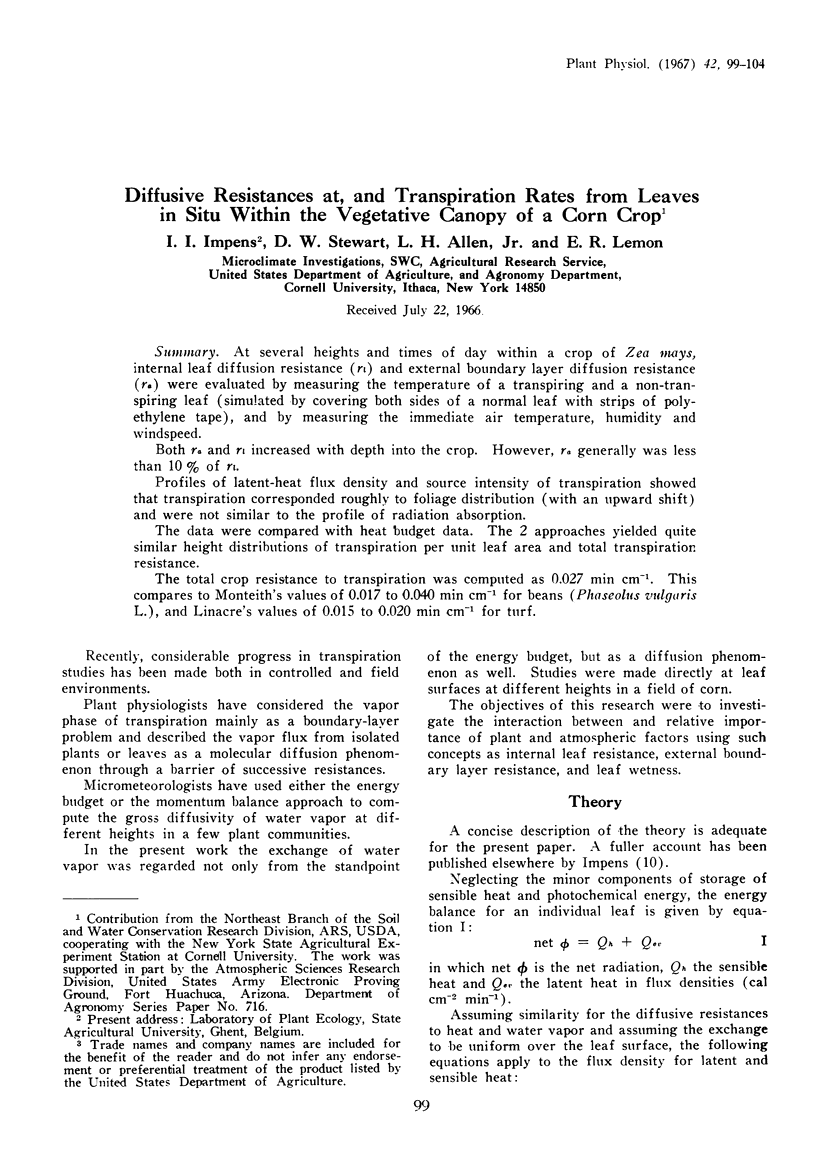
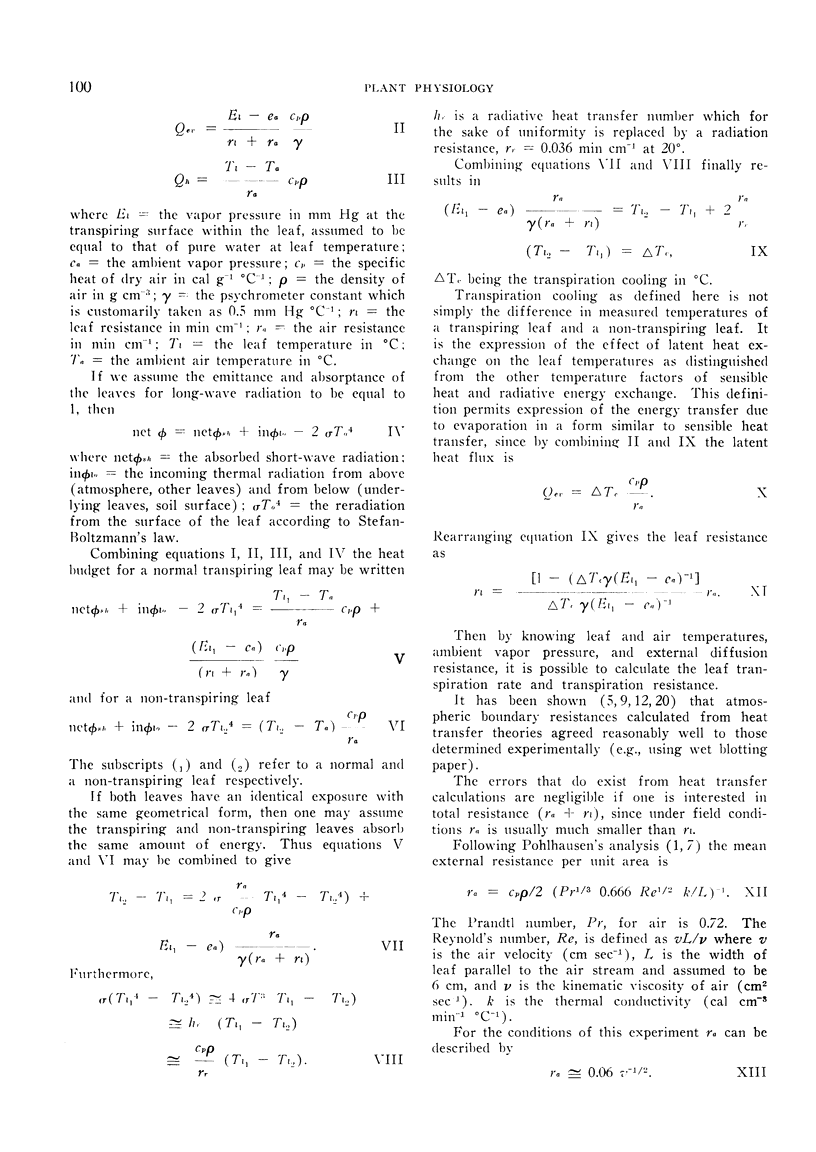
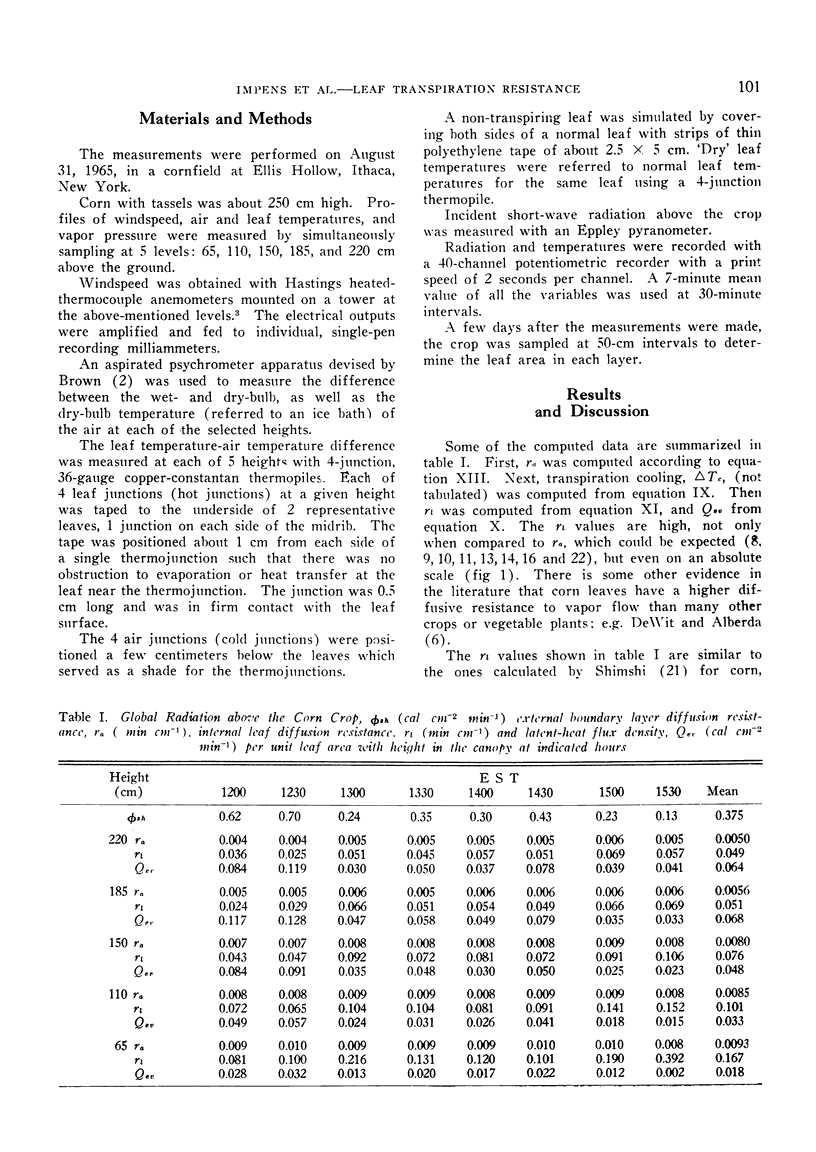
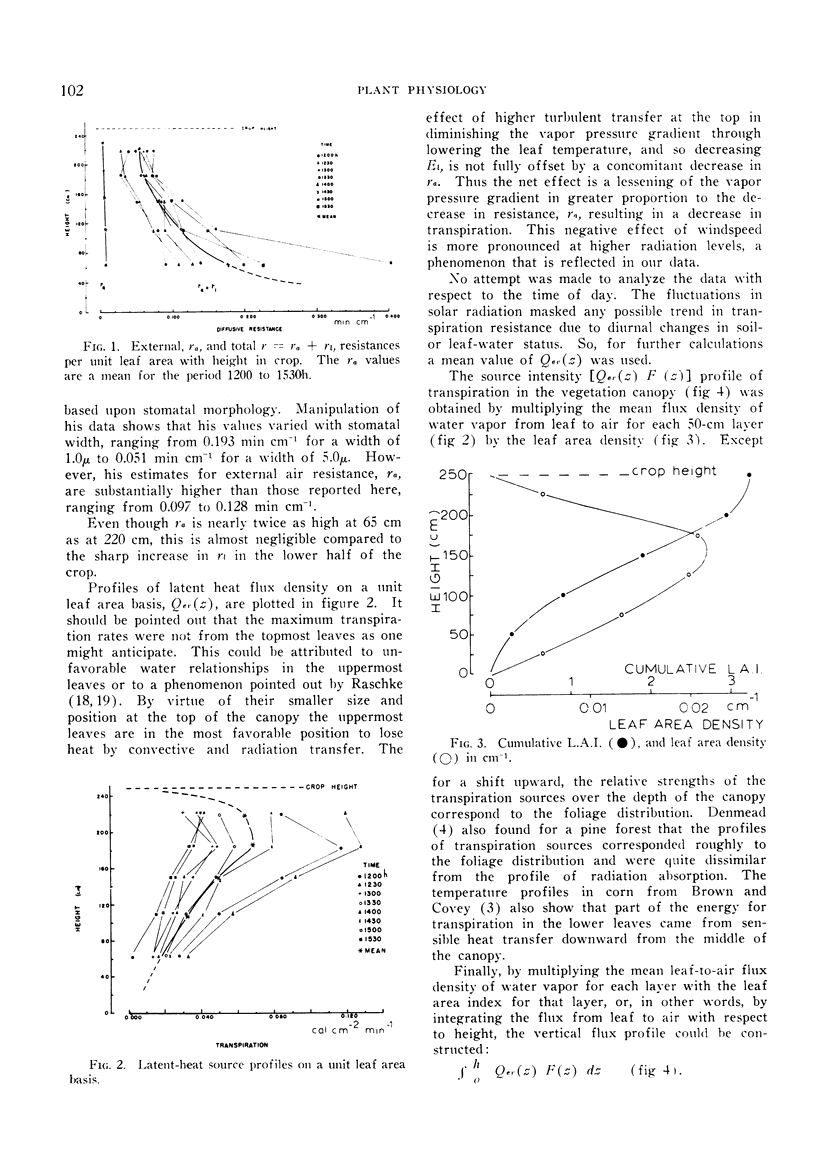
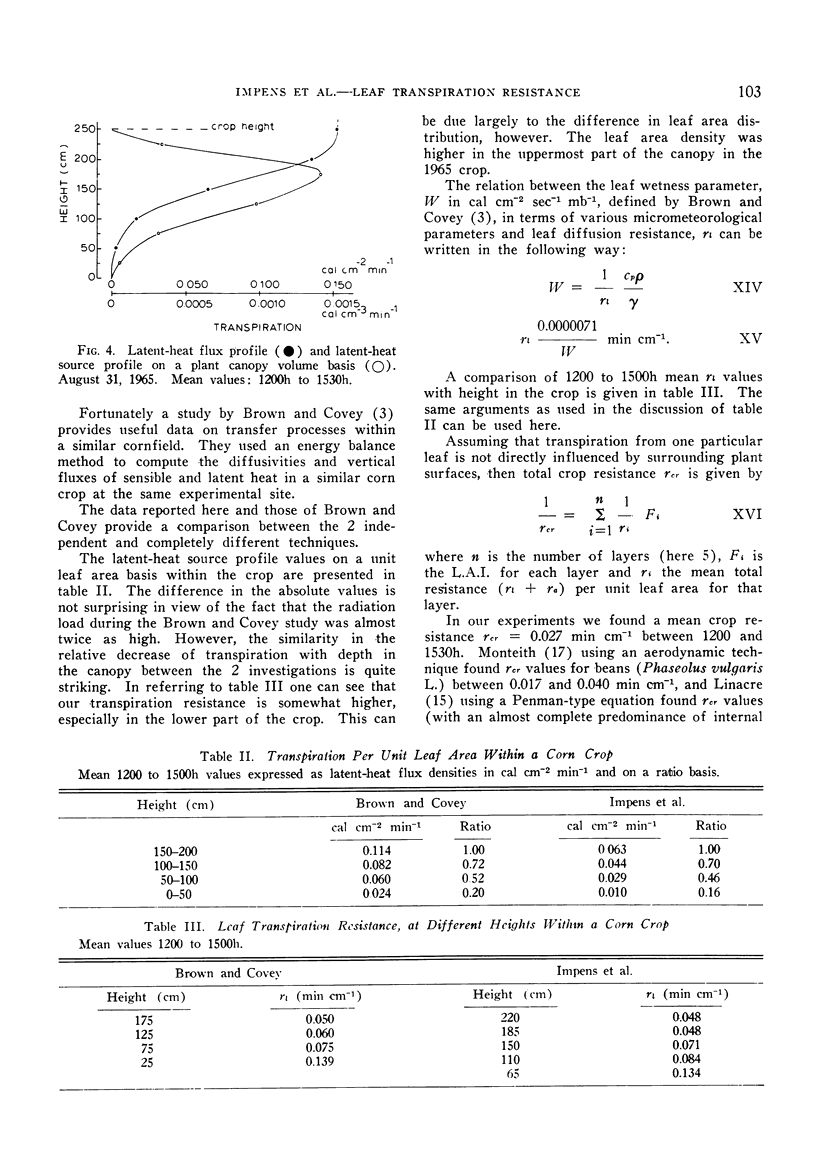
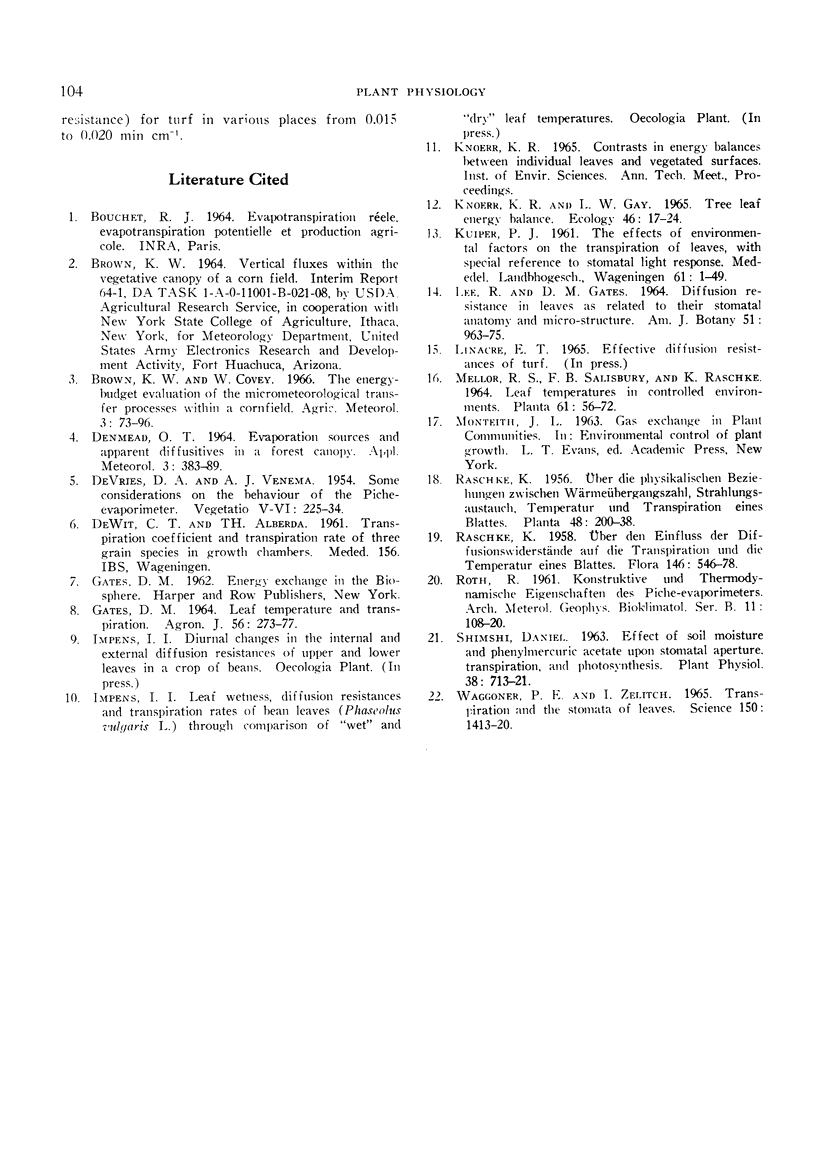
Selected References
These references are in PubMed. This may not be the complete list of references from this article.
- Shimshi D. Effect of Soil Moisture and Phenylmercuric Acetate upon Stomatal Aperture, Transpiration, and Photosynthesis. Plant Physiol. 1963 Nov;38(6):713–721. doi: 10.1104/pp.38.6.713. [DOI] [PMC free article] [PubMed] [Google Scholar]


